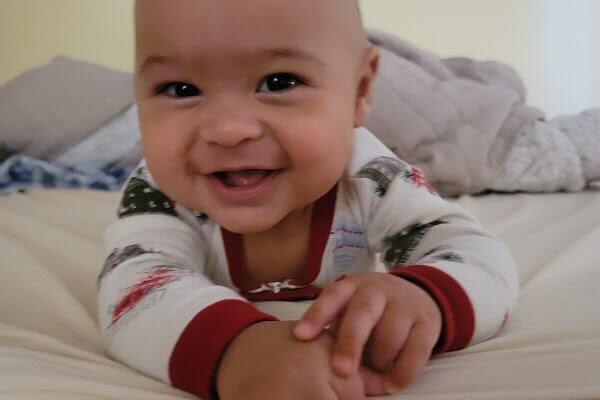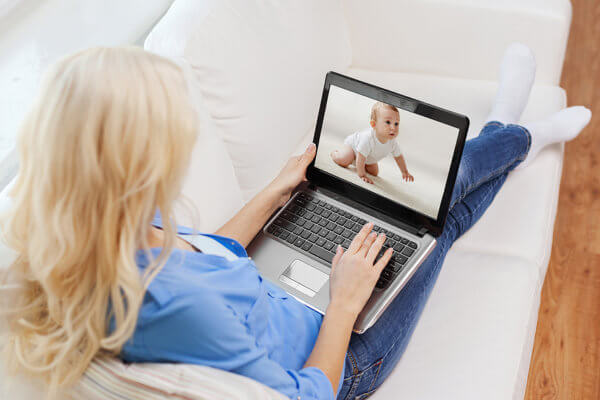
An excerpt from the new book, Superbaby: Twelve Ways to Give Your Child a Head Start in the First Three Years by Dr. Jenn Berman
I am a firm believer that children don’t need tons of toys, especially when so many of the store-bought variety are no better than home versions, like sock puppets, pots and pans, Tupperware—or, just as likely, the box that the expensive toy came in. Nevertheless, parents constantly ask me which toys they should get for their kids. The chart below should give you a sense of what is going on with your children at different ages and stages and which toys might be age-appropriate for their mental and emotional development. I am not suggesting that you buy all the toys mentioned below, even if you can afford to. My intention is to give you a preview of what your child might enjoy, depending on where she is developmentally. You should always check the safety of any toy you buy and never leave your child alone with a toy that she could choke on or hurt herself with. Even a simple stuffed animal can have plastic eyes or a nose that could become a choking hazard. As you can probably guess, I consider books the best toys money can buy.
Dr. Jenn’s Recommended Toys and Games from Birth to Age Three
-
Birth to three months
Your Child’s Significant Developments:
• Starts to learn to visually track objects
• Newborn can see only eight to fourteen inches in front of her face
• Most babies are attracted to faces
• High-contrast patterns are easiest for babies to see
Toys:
• Baby mirrors
• Bubbles
• Activity mats with hanging toys
• Small soft balls
• Baby Whoozits
• Links
• Play mats
• Rattles
• Mobiles
• Sock and wrist rattles
NEXT: THREE TO SIX MONTHS
{pagebreak}
-
Three to six months
Your Child’s Significant Developments:
• Able to grasp objects
• Likes to pick things up
• Learns to sit up
• Puts everything in her mouth
• Often starts to push up on hands and knees at around five months
• New teeth start to break through and teething begins
Toys:
• Mobiles
• Skwishes
• Winkels
• Oballs
• Small maracas
• Open-weave scarves
• Finger puppets
• Soft stuffed animals
• Squeaky toys
• Teething rings
• Links
• Household items like plastic bowls and wooden spoons
• Wooden blocks and soft blocks
• Baby-friendly toy cars
NEXT: SIX TO NINE MONTHS
{pagebreak}
Six to nine months
Your Child’s Significant Developments:
• Starts to understand object permanence, the idea that things exist even when the baby cannot see them
• Begins feeling separation anxiety
• Develops a pincer grasp
• Starts to crawl
Toys:
• Small balls
• Peek-a-boo balls
• Plush trucks
• Four-wheeled push toys
• Crinkle toys
• Animal or people figurines
• Fabric tunnels
NEXT: 9-12 MONTHS
{pagebreak}
-
9-12 months
Your Child’s Significant Developments:
• Able to bang objects together
• Very mobile: creeps, crawls, walks with the aid of furniture
• Interested in using objects as tools
• Enjoys interactive games with adults
• Increased problem-solving skills
Toys:
• Stacking and sorting toys
• Nesting toys (cups)
• Toy food
• Sandbox toys (bucket, shovel, etc.)
• Extra-large Lego-type building blocks
• Shape-sorting toys
• Balls that can bounce
• Toy telephones
• Soft baby dolls
NEXT: 12-18 MONTHS
{pagebreak}
-
12-18 months
Your Child’s Significant Developments:
• Stronger fine motor skills
• Learning cause and effect
• Very active and mobile
• Has better hand coordination and is able to hold a crayon, paintbrush, or writing utensil well enough to scribble
• Stranger anxiety often peaks around fifteen months
Toys:
• Blocks
• Puppets
• Sorting toys
• Push toys
• Pull toys
• Hammering toys
• Large wooden peg puzzles
• Bug box for observing insects
• Wagon
• Music toys
• Sandbox
• Finger paints
• Nontoxic crayons and paper
• Toy tool bench
• Toy kitchen
• Toy animal and people figurines (nonchokable)
• Dolls with removable dresses and accessories
• Ball pit (small ones are available for home use)
• Padded rocking horse for toddlers
NEXT: 18-20 MONTHS
{pagebreak}
-
18-20 months
Your Child’s Significant Developments:
• Able to recognize herself in the mirror and in photos
• Asserts her will (get ready for power struggles!)
• Able to imitate grown-up behavior
• Has more refined fine motor skills
• Asserts independence (expect to hear lots of “I can do it myself!”)
Toys:
• Toy versions of grown-up objects: phones, purses, wallets, keys, etc.
• Unbreakable tea sets
• Dolls, strollers, bottles
• Doctor’s kits, tool kits
• Tricycle
• Nontoxic crayons and markers, paper, glue sticks
• Stickers
• Water or sand table
• Bead mazes
• Trains
• Cars
• Nontoxic play dough
• Sit n’ Spin or Spin Around
• Etch-a-Sketch® or Doodle Pro™
• Large magnet letters
• Letter trains
• Potty training dolls
NEXT: 2-3 YEARS
{pagebreak}
-
2-3 years (and up)
Your Child’s Significant Developments:
• Develops symbolic play, or using objects in a way that is different from the intended purpose of the object
• Is very verbal
• Faces many conflicts due to her new-found abilities and is frustrated when she needs help
• Improved memory skills
• Knows many colors and letters and can count to ten
• Can get dressed and brush her own teeth by age three
• Can walk run, jump, and balance on one leg
• Imaginary play gets much more complex
• Has lots of tantrums
• Is “ritualistic,” i.e., likes things to be put in the same place in the same way
Toys:
• Tricycle
• Dress-up clothes
• Matching games
• Doll house and dolls
• Toy gardening set
• Ant farm
• Arts and crafts supplies
• Train sets
• Kids basketball hoop and ball
• Kid-size brooms, dust pans, and vacuum cleaners
• More advanced puzzles
• Basic board games like Candyland and Concentration (age three and up)
• Easels
• Bean bags
• Lacing beads (large size)
• Small, child-friendly tent for a clubhouse
• Kaleidoscopes
• Child-friendly magnifying glasses
• Sidewalk chalk
• Stickers
• Pipe cleaners
• Stamps and nontoxic ink
• Eye Spy Bags®
• Magna Tiles ®

About Dr. Jenn Berman:
Dr. Jenn Berman is a marriage, family, and child therapist in private practice in Los Angeles. She is the author of the Los Angeles Times bestselling book The A to Z Guide to Raising Happy Confident Kids, which won the Mom’s Choice Award gold medal in parenting. She is also to co-author of the children’s book Rockin’ Babies. Her “Dr. Jenn” parenting column has been published for over eight years by Los Angeles Family magazine and five other magazines every month, and won the prestigious Parenting Publications of America award in parenting and child development. Dr. Jenn is on the Board of Advisors for Parents magazine and has appeared on hundreds of television shows including The Oprah Winfrey Show, The Today Show, and The Early Show. She currently hosts a call-in advice show on Sirius/XM’s Cosmo Radio. Dr. Jenn has an eco-friendly clothing line for adults and children called Retail Therapy. She lives in Los Angeles with her husband and children. For more information go to www.DoctorJenn.com.
Click here to buy Superbaby: Twelve Ways to Give Your Child a Head Start in the First Three Years
A list of recommended toys by age that will actually help your child’s development.



